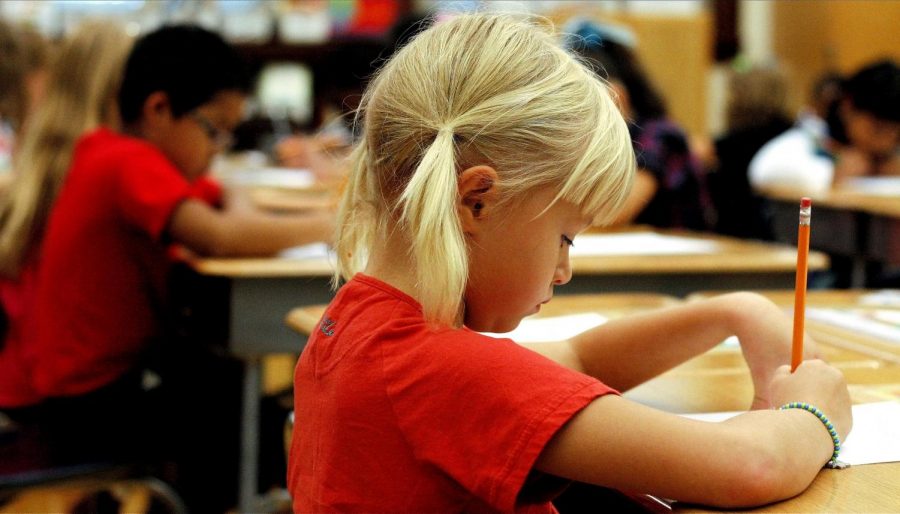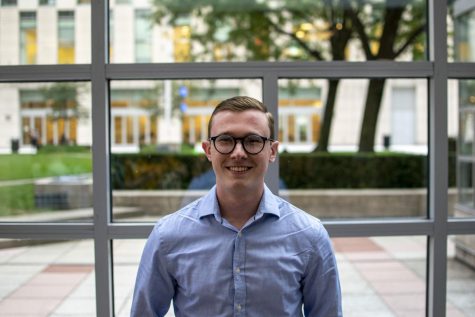What Students’ Rights Really Look Like
PHIL ROEDER VIA FLICKR
When students are denied their full rights as citizens, it causes resentment and mistrust that goes far beyond the schoolhouse walls.
September 17, 2019
The start of September brings with it millions of students headed back to school following their summer vacations.
This year, an upcoming high court case is one on everybody’s mind as they send their children off for yet another year of school. While this particular case is fairly narrow, dealing with a tax credit controversy in Montana, it may not add up to much importance. Nevertheless, it has never been more clear that our nation’s judiciary adjudicates issues not only pertaining to the oldest of our federal institutions, but to the youngest of our children, too.
Throughout our nation’s history, the Supreme Court has ruled that students in public schools are entitled to certain rights in a variety of circumstances. In 1969, following the wave of anti-war protests, the Court held that students are entitled to a right to free expression unless administrators find that such acts constitute “substantial interference with school discipline or the rights of others.”
However, over the past several decades, statements in defense of students’ constitutional rights have appeared more often in dissents than they have in the majority. In 1985, the Supreme Court decided that any student searches must be conducted under the premise of “reasonable suspicion,” a significantly lower standard than the basis of “probable cause” enshrined in the Fourth Amendment.
In his fiery dissent to the majority, Justice John Paul Stevens wrote, “Schools are places where we inculcate the values essential to the meaningful exercise of rights and responsibilities by a self-governing citizenry. If the Nation’s students can be convicted through the use of arbitrary methods destructive of personal liberty, they cannot help but feel that they have been dealt with unfairly.”
How can one not feel a sense of anger from this excerpt? Police aren’t allowed to break into someone’s home or private property under the guise of a “reasonable suspicion.” They wouldn’t be allowed to randomly search your car for drugs without you having broken the law first. So why do we allow school administrators, who aren’t even law enforcement officials, the sweeping ability to conduct searches of personal and private property of students?
And it’s not just the Supreme Court that litigates these issues. In fact, they are often decided in courthouses with a much more intimate connection to the local community. Despite Fordham’s Students for Justice in Palestine’s recent victory, which played out in the New York State Supreme Court, we see that even beyond the realm of K-12, free speech issues in all levels of education remain.
Despite the ebb and flow in court victories and setbacks, there is an overall feeling of uneasiness when it comes to students’ rights across both public and private institutions. A cursory Google search for “school districts violating student rights” reveals a number of controversies and lawsuits from across the nation within the past month alone. From dress codes, to students with disabilities to even hair rules, these stories represent only the tip of the iceberg of what is going on in our nation’s schools.
In one of the most famous Supreme Court dissents of all time, Justice William Douglas penned that he believed inanimate objects such as trees and rivers should have standing to sue for their protection. While his opinion was indeed a dissent and carried no force of law, it became a calling card for many environmentalists and subsequent federal developments in National Parks.
If we can construe judicial philosophy so much that trees are given standing in lawsuits, doesn’t it seem like students should receive their constitutional rights?
School is a molding experience for students. Besides their homes, it is a place where students develop ethically, socially and intellectually. It is ostensibly a preparation for the “real world,” so the fact that their disciplinary protocols feature the due process one would expect out of a developing country is not comforting.















Maria Pontones-Bonenfant • Sep 19, 2019 at 10:56 am
I’m a parent of a current Sophomore (actually on staff – Olivia) so I browse your web site and couldn’t help but hone in on your article. Based on my personal experience I think one of the greatest social issues we have in this country is minors’ rights but it isn’t often discussed, in part I think because the oppressed have no voting rights. The list of examples is long but a few I have encountered have to do with employment, housing, taxes and the like. The overarching theme is that they are treated like adults or like minors in an arbitrary way, and the “way” seems to be based on what is most advantageous for the government or industry. I think phase 2 of my career may have to be advocating for these grossly underrepresented individuals!